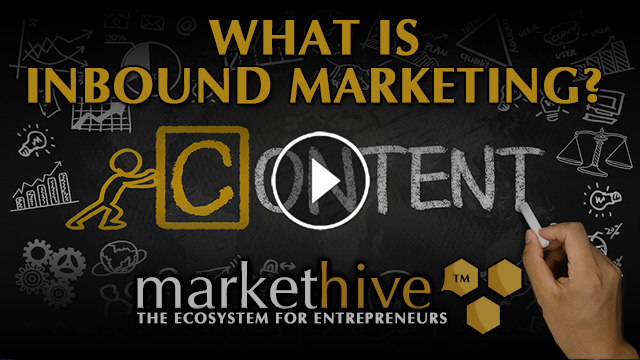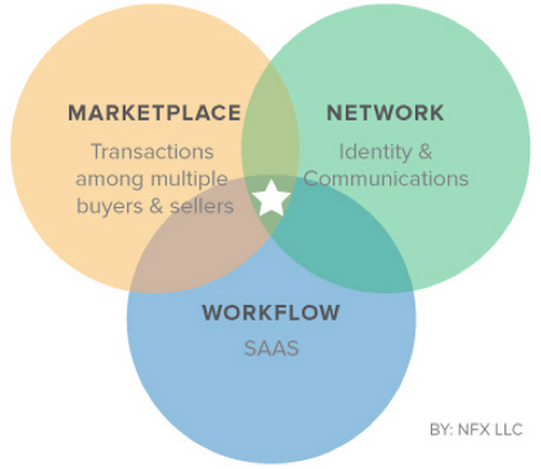 From Social Networks to Market Networks
From Social Networks to Market Networks

Markethive is a full suite “Inbound Marketing” platform integrated with a full scale “social network” targeting the 800 million “Entrepreneur” global populations. Like Facebook meets Pardot. This new revolution of the next wave of progressions is known as Market Networks, compared to the last wave of Social Networks. Even MarketHive’s name reflects this new revolution. Experts predict the “Market Network” will dwarf the “Social Network” market.
1. Founder (Thomas Prendergast): 40 years’ experience in Ad Agency and Marketing professional. Educated and developed technology awareness from 1982 — 1992 in the Silicon Valley. Visionary, skilled programmer, innovation 1sts, Stanford and UCSD Super Computer Center foundations and over 20 years building marketing innovation on the Internet.
2. Pardot, a full scale Inbound Marketing Platform (very similar to Markethive's platform) sold for $95 million to complete the ExactTarget platform in preparation to be sold to Sales Force for 2.5 billion Using these metrics it is easy to assign a value to Markethive of a minimum of $100 million. see story: www.bizjournals.com/atlanta/blog/atlantech/2013/06/atlantas-pardot-helped-drive.html
3. The experts (like Nir Eyal) and many bloggers (like Guerric de Ternay) are recognizing the new emerging systems called Market Networks.
- Market-networks are hybrid animals: part social network, part marketplace, part SaaS.
- It’s a social network. Professionals use profile pages to showcase their work and demonstrate their credibility. They also connect with each other and build relationships.
- It’s a marketplace. Professionals come online together to find other parties with whom they can do business.
- It’s a SaaS (Software as a System) tool. Professionals use the tools on the top of the marketplace to negotiate, do the job, or manage the paperwork.

4. Hooked: Systems that improve with age are the sought after prizes as they retain growth and are considered monopolies, not commodities. Markethive possesses this trait on 4 serious levels.
- Leads (called children) from the profile pages advance organically and improve with time
- Blog subscribe organically builds subscribers (automatically publishing) to top social networks
- Profile page improves with organic advancement in workshops, blogging and groups
- Increased reputation builds via blogs and profile page growth
5. Markethive is the indisputable full platform Market Network and has the distinct advantage of ready to launch and be "First to Market".
6. At least three patentable products; Blog Subscribe, Blog Swipe and 1Click Subscribe Widget
7. Projected funds of minimum $1 million with 20% to polish the system in preparation to officially launch and the remaining 80% to drive the marketing and crowd funding to record breaking status.
Summary:
see story: https://techcrunch.com/2015/06/27/from-social-to-market-networks/
Social Networks Were The Last 10 Years. Market Networks Will Be The Next 10.
First we had communication networks, like telephones and email. Then we had social networks, like Facebook and LinkedIn. Now we have market networks, like HoneyBook, AngelList, Houzz, DotLoop and Joist.
You can imagine a market network for every industry where professionals are not interchangeable: law, travel, real estate, media production, architecture, investment banking, personal finance, construction, management consulting and more. Each market network will have different attributes that make it work in each vertical, but the principles will remain the same.
Over time, nearly all independent professionals and their clients will conduct business through the market network of their industry. We’re just seeing the beginning of it now.
Market networks will have a massive positive impact on how millions of people work and live, and how hundreds of millions of people buy better services.
“Markethive has the ability to be an incubator (hive) to produce more strategic “Market Networks” as well”.
Thomas Prendergast
Founder and CEO Markethive, Inc.
P.S.
The "Market Network" Illustrated
(Do you see Markethive?)
P.S.S.
Definition of Hive (Curious aint it?)
hive (hīv)
3. a network showing signs of great industry
Alan Zibluk Markethive Founding Member

